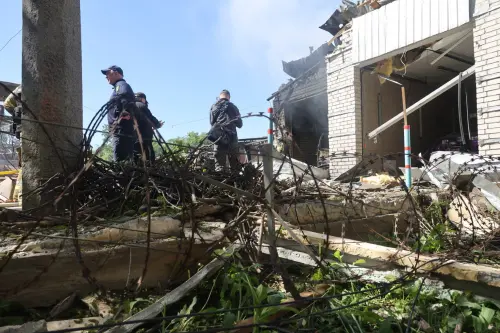Content from the Brookings Doha Center is now archived. In September 2021, after 14 years of impactful partnership, Brookings and the Brookings Doha Center announced that they were ending their affiliation. The Brookings Doha Center is now the Middle East Council on Global Affairs, a separate public policy institution based in Qatar.
Last month, the Department of Defense released its annual report on China’s growing military power. This year’s report is full of useful data and well-calibrated interpretations. But for Taiwan, the picture it paints is not good.
The report concludes that China’s People’s Liberation Army (PLA) acquisition of capabilities relevant to Taiwan continues without any reduction; deployments of advanced assets opposite the island have not eased; and the military balance continues to shift in China’s favor. It judges that China is acquiring capabilities in the service of three objectives: to deter Taiwanese independence; to influence Taiwan to settle on Beijing’s terms; and to “deter, delay, or deny possible U.S. support for the island in case of conflict.” China thus seeks to enhance its options while restricting those of Taiwan and the United States.
Given China’s fundamental interests, these objectives make some sense superficially. If Taiwan were to become a separate country, that would be a huge blow to China’s sense of self and its great-power ambitions. And if it had to fight to reverse a Taiwanese decision for full independence, China would want to frustrate any U.S. effort to come to the island’s defense.
But these trends are still puzzling. Cross-strait relations have improved significantly since 2008. President Ma Ying-jeou has sought to reassure China and expand cooperation with it. The long-term chances that any Taiwanese leader would push for full independence or that the public would support such a measure is probably low. These trends do not mean unification will happen anytime soon, but they do mean Beijing can act on the basis of its hopes rather than its fears.
Yet the military buildup continues. Why it does is something of a mystery. The PLA likely believes it does not yet have the capacity to deal with the worst-case scenario, which it has made the basis of its planning.
There is one area in which China may be showing restraint: the deployment of short-range ballistic missiles. The Defense Department report estimate for this year is the same as the one for last year: between 1,050 and 1,150 missiles. Yet this pause – if that is what it is – is less significant than it seems.
First, the number of PLA cruise missiles is growing – perhaps by 100 in the past year. (The Defense Department’s estimate of existing missiles is between 200 and 500.) Second, China’s ability to frustrate U.S. intervention to defend Taiwan increases apace. Third, the ballistic missiles themselves are becoming more accurate and have more effective munitions. Even if the number of missiles has remained constant, the damage they can do to Taiwan’s command and control, airfields, ports and other infrastructure is increasing. The scale of the potential damage is what is important to Taiwan’s security, not the precise number of missiles.
What are the implications of these developments? First, Taiwan needs to continue to strengthen its deterrence. Second, the United States should continue to sell arms to Taiwan to help it build that deterrence and reduce the island’s sense of vulnerability.
Third, China should examine the counterproductive effect of its military buildup. Increasing Taiwan’s sense of vulnerability will not win the hearts and minds of Taiwan’s people. It betrays a lack of confidence in the good sense of Taiwan’s voters. China only hurts its cause by acting in ways that lead Taiwanese citizens to vote on the basis of their fears rather than their hopes.



Commentary
Op-edTaiwan Faces Growing Threat: Communist China Undermines Rapprochement
September 8, 2010